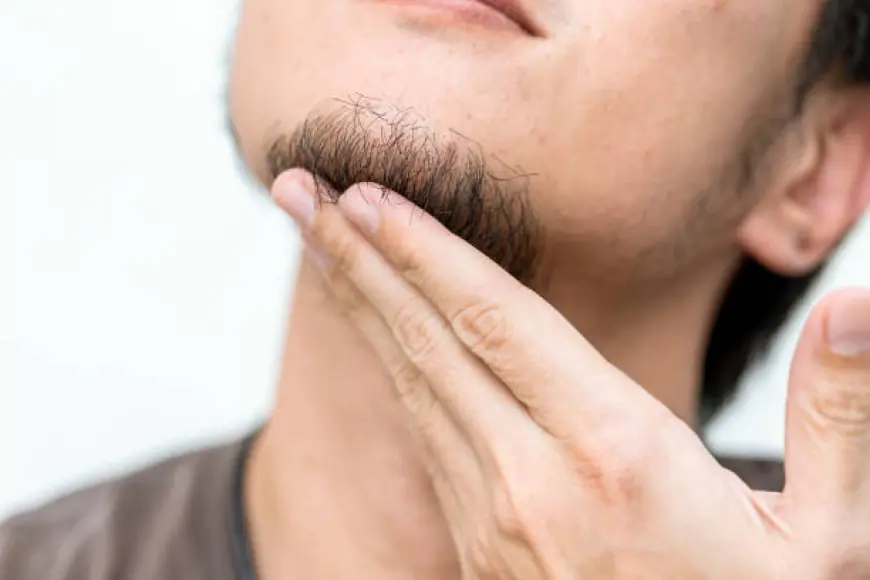Beard Hair Transplant Recovery Timeline: What to Expect and How to Care
Beard Hair Transplant offers a permanent solution for thin or patchy beards. Achieve a natural, defined look with confidence.

A Beard Hair Transplant (زراعة شعر اللحية) is a popular procedure for men seeking fuller, natural-looking facial hair. While the surgery itself provides the essential framework for new beard growth, understanding the recovery timeline is vital to achieving the best results. This guide explains what to expect after the procedure, key stages of healing and regrowth, and tips to support recovery.
Immediate Recovery: The First Few Days
Right after the procedure, it’s common to feel groggy—especially if sedatives were used during surgery—and patients should avoid driving themselves home. The donor and recipient sites will be red, swollen, and tender.
At this stage, avoid touching or washing your beard to reduce infection risk. The doctor usually prescribes antibiotics or ointments to promote healing and prevent infections. Rest is essential, and managing discomfort with prescribed painkillers helps ease soreness.
First Week: Healing Phases and Initial Care
During the first week, most patients notice redness, swelling, and itching around the transplanted area. The itching indicates healing but should not be scratched to avoid graft displacement or infection.
You should avoid strenuous activities that cause excessive sweating and refrain from bathing with very hot or cold water. Gentle cleansing of the area becomes possible as per the surgeon’s instructions, typically starting after about 5 days.
Most surgeons recommend avoiding shaving during this period to safeguard the new grafts and ensure they settle securely.
Two Weeks Post-Transplant: Shedding Phase Begins
About 10 to 14 days after the surgery, scabs usually have completely healed, and it is generally safe to shave gently. However, patience is important because at this point the transplanted hairs will shed—a natural "shock loss" phase.
This shedding can be alarming but is entirely expected. It signals that the transplanted follicles have entered a resting phase before new growth begins. During this time, the beard area may look patchy or sparse again. It’s crucial to avoid manipulating the area harshly to protect the follicles.
One to Three Months: The Dormant Phase
No visible hair growth occurs during this time, which can be frustrating but normal. The follicles are resting and preparing to start a new growth cycle.
Good nutrition, hydration, and sticking to the prescribed aftercare routine optimize the environment for follicle health. Avoid smoking, alcohol, and any irritants that could hinder healing.
Three to Six Months: New Hair Growth Starts
Around 3 to 4 months post-transplant, new hair begins emerging from the transplanted follicles. These early hairs are usually thin and delicate but gradually thicken and mature.
This is an encouraging phase where patients see clear signs of progress. Beard grooming can begin but should be done gently. Avoid harsh chemical treatments or rough shaving until the hair is stronger.
Six to Twelve Months: Full Maturation of Beard Hair
Between 6 to 12 months after the transplant, transplanted beard hairs continue growing and fill in to create a thick, natural-looking beard. The texture and curl pattern also develop to match the surrounding natural hair.
Most patients achieve their final desired outcome by the one-year mark. Maintaining a healthy beard care routine—using mild products and trimming appropriately—helps retain the vitality of the transplanted hair.
Important Aftercare Tips During Recovery
-
Avoid direct sun exposure on the face and donor area in the first few weeks; UV rays can harm healing skin and follicles.
-
Never pick at scabs or scratch the beard area to prevent infection and scarring.
-
Follow your surgeon’s instructions for washing and cleaning; typically, gentle cleansing starts after 5 days.
-
Refrain from strenuous activities and heavy sweating for at least two weeks.
-
Stay hydrated and maintain a nutritious diet to support healing.
-
Avoid smoking and limit alcohol consumption during recovery.
-
Be patient—full results take time and consistent care.
When to Contact Your Surgeon
Seek medical advice if you experience:
-
Prolonged redness and swelling beyond 10 days
-
Signs of infection, such as pus, foul odor, or fever
-
Severe pain not managed by painkillers
-
Unusual or sudden hair loss beyond normal shedding
-
Any concerns about healing progress or appearance
Prompt professional care ensures any complications are addressed early.
Summary Timeline of Beard Hair Transplant Recovery
| Timeframe | What to Expect | Key Care Actions |
|---|---|---|
| Immediately to Day 3 | Redness, swelling, scabbing | Rest, avoid touching, antibiotics |
| Day 4 to Day 7 | Itching, crusts hardening | Gentle care, no strenuous activity |
| 10-14 Days | Scabs fall off, safe to shave gently | Avoid harsh shaving, protect grafts |
| 1-3 Months | Follicles dormant (shedding phase) | Maintain healthy lifestyle, patience |
| 3-6 Months | New hair begins to grow | Gentle grooming begins |
| 6-12 Months | Full beard develops, hair matures | Regular beard care, avoid irritants |
Conclusion
The Beard Hair Transplant Recovery Timeline involves careful stages of healing, shedding, and regrowth that require patience and proper care. Understanding each phase helps manage expectations and ensures optimal results. With expert guidance and meticulous aftercare, men can enjoy a natural, dense, and permanent beard transformation.
For specialized, safe, and advanced beard hair transplant treatment, Royal Clinic Saudia offers personalized consultations and top-tier care at every step. Contact Royal Clinic Saudia today to learn more and begin your beard restoration journey confidently.
What's Your Reaction?
 Like
0
Like
0
 Dislike
0
Dislike
0
 Love
0
Love
0
 Funny
0
Funny
0
 Angry
0
Angry
0
 Sad
0
Sad
0
 Wow
0
Wow
0




























































